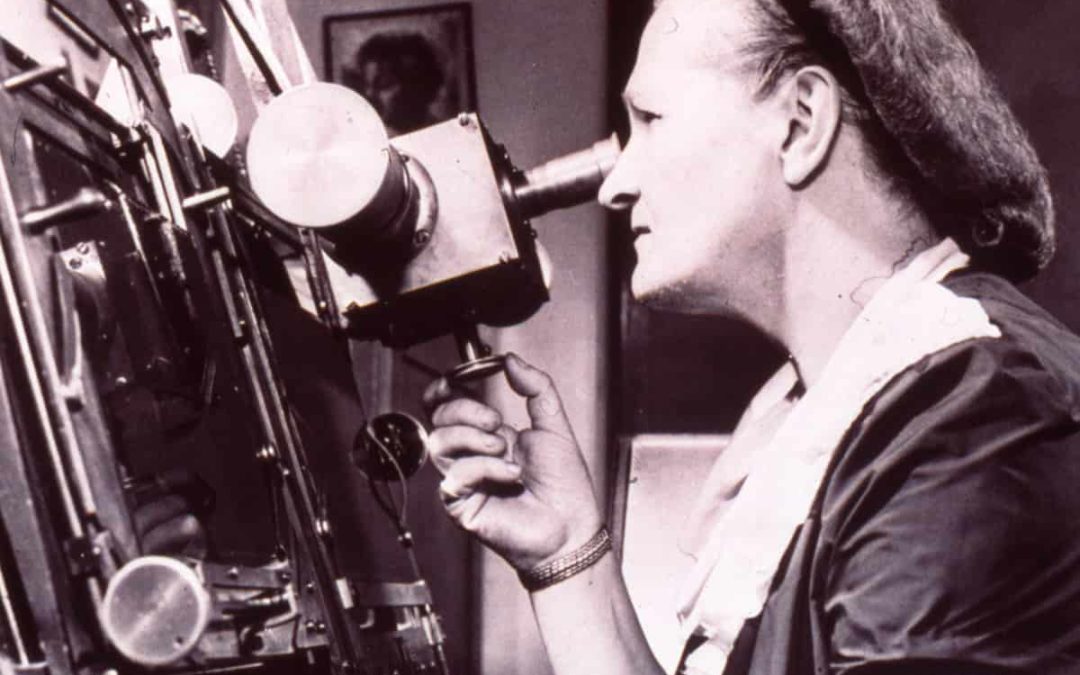“Young people, especially young women, often ask me for advice. Here it is. Do not undertake a scientific career in quest of fame or money. There are easier and better ways to reach them. Undertake it only if nothing else will satisfy you. Cecilia Payne
1925 – Harvard Observatory – Cambridge, Massachusetts: Most people know that Isaac Newton discovered gravity, Charles Darwin his theory of evolution and Albert Einstein the relativity of time. But almost 100 years since her discovery of the composition of the stars, few know the name Cecilia Payne. Her road to the stars had plenty of twists and turns.
Raised by a single mother in the small town of Wendover, England, Cecilia graduated high school in 1919. There was no money to attend college, so she worked hard to earn a scholarship to Cambridge University. Cecilia wanted to study science but was unsure which field until she participated in a lecture about the 1919 total solar eclipse – the longest eclipse in 500 years. Astronomy and astrophysics became her love.
In 1923, women were not welcome in the world of science. When Cecilia completed her degree in astronomy, Cambridge refused to award her a degree. It would be 25 years before Cambridge awarded degrees to women. After realizing there would be no opportunity for graduate work, Cecilia left England for Harvard University in America – one of the only academic institutes that accepted women in physics.
Cecilia received a graduate fellowship to study at the Harvard Observatory. At the time, astronomers believed that the earth and the sun consisted of the same chemical elements. Cecilia’s doctoral thesis, Stellar Atmospheres, used the new science of quantum physics to determine if this hypothesis was true
Cecilia could study the color spectrums of several hundred thousand stars archived in the observatory by attaching a spectroscope to a telescope. She demonstrated how to decode complicated starlight spectra to determine the chemical elements in the stars. For the first time, Cecilia discovered that the sun and stars consisted primarily of hydrogen and helium. At the same time, the earth was known to consist of more than 100 elements.
Cecilia’s astronomy advisor, Harlow Shapely, was so excited about her discovery that he sent a copy of her thesis to the distinguished Princeton University astronomer, Dr. Henry Norris Russell. Russell responded, “This is clearly impossible. It contradicts prevailing wisdom.”
In 1925, 25-year-old Cecilia Payne became the first person to earn a Ph.D. in astronomy from Radcliffe College because Harvard did not grant doctoral degrees to women. She inserted a disclaimer in her thesis to protect her career: “The calculated abundances of hydrogen and helium were almost certainly not real.” Russell published Cecilia’s discovery four years later and took the credit for himself.
After completing her doctoral work, Cecilia remained at Harvard and worked for Shapely. Although she did the same job as other professors, her title and salary were that of a technical assistant. There were no female professor positions. Cecilia and her team made more than three million observations of stars’ light spectrums helping scientists and astronomers to better understand the origins of the universe. Much of her work was done with Russian astronomer Sergei Gaposchkin, whom she married in 1934.
In 1956, more than 30 years after her landmark discovery, and despite the grumbling of some professors, 56-year-old Dr. Cecilia Payne became the first woman promoted to full professor at Harvard. She also became the first woman to chair the astronomy department. Cecilia retired from teaching at Harvard a decade later. Despite retirement, she continued her research as a member of the Smithsonian Astrophysical Observatory.
In 1976, in a touch of irony, Cecilia Payne received the Henry Norris Russell Prize presented by the America Astronomical Society. Distinguished astronomer, Otto Struve, referred to her doctoral work as “the most brilliant Ph.D. thesis ever written in astronomy.”
She died three years later. Her obituary reads in part, “Cecilia Helena Payne-Gaposchkin, a pioneering astrophysicist and probably the most eminent woman astronomer of all time, died in Cambridge, Massachusetts, on December 7, 1979.”
Cecilia blazed a trail for women at Harvard and beyond, inspiring several generations of women to study science and astronomy. In 2008, in recognition of her pioneering work in understanding the composition of the stars and the universe, the Institute of Physics established the Cecilia Payne-Gaposchkin Medal and Prize.

An amazing story. Thanks for sharing.